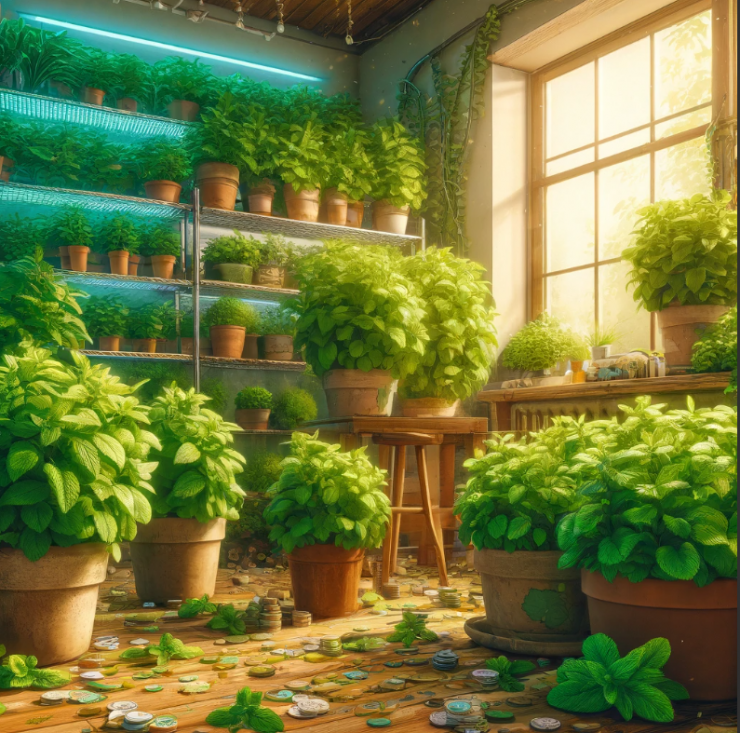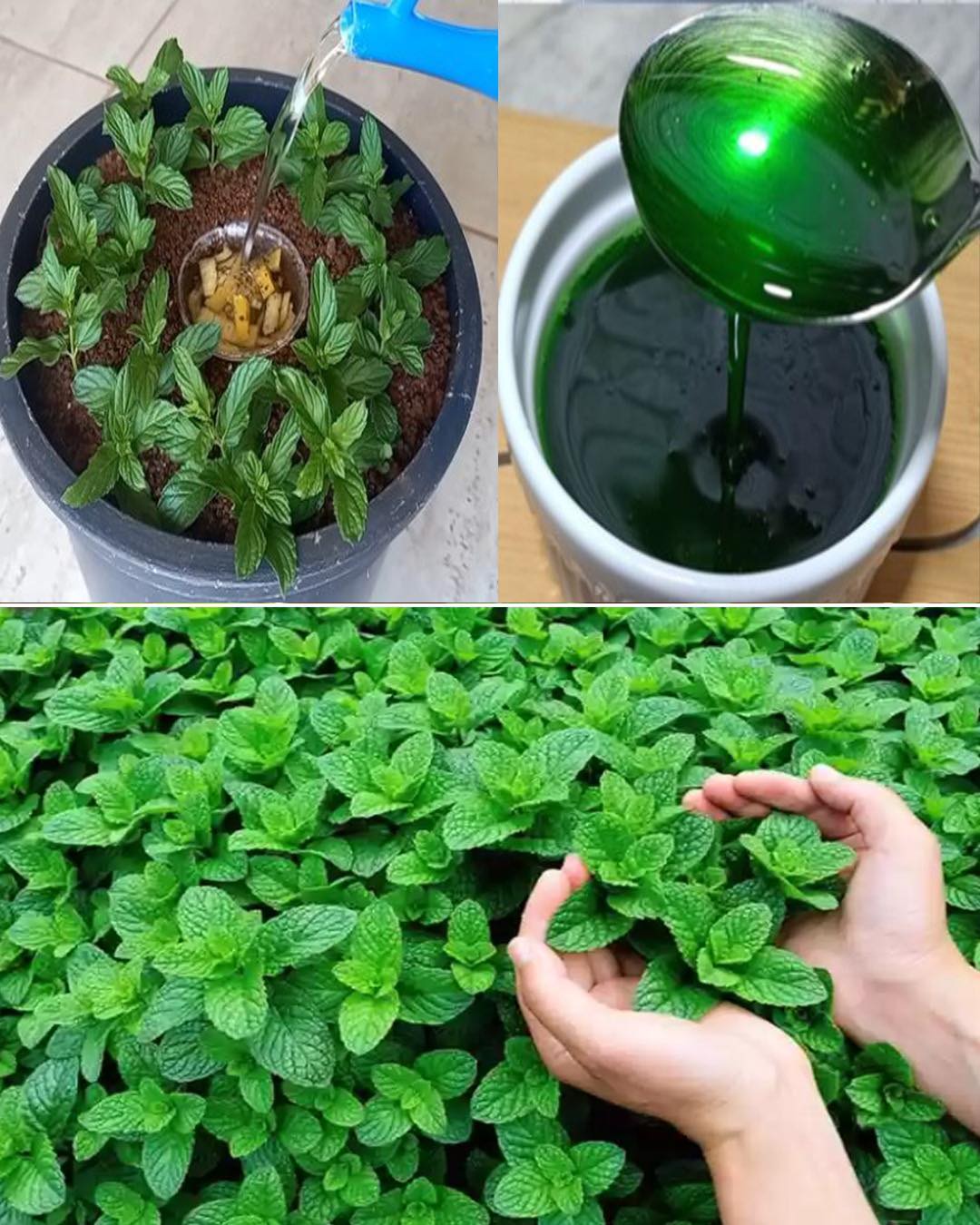Mint is a versatile and aromatic herb that is a favorite among gardeners and cooks alike. Growing mint indoors can be a rewarding experience, providing you with a fresh supply of this delightful herb year-round. Whether you’re new to gardening or an experienced green thumb, these five secret tips will help you grow an abundance of mint indoors.

1.Choose the Right Variety
While there are many types of mint, some varieties are better suited for indoor growing than others. Peppermint and spearmint are popular choices due to their vigorous growth and robust flavor. When selecting a variety, consider the space available and your intended use. For example, peppermint is ideal for teas and desserts, while spearmint works well in savory dishes and beverages.
2.Use the Perfect Pot and Soil
Pot Selection:
Mint thrives in containers, making it perfect for indoor cultivation. Choose a pot that is at least 8-12 inches in diameter to give the roots plenty of room to spread. Ensure the pot has drainage holes to prevent waterlogging, which can lead to root rot.
Soil Choice:
Mint prefers well-draining soil that retains some moisture but doesn’t become waterlogged. A high-quality potting mix with added perlite or sand will provide the right balance. Avoid using heavy garden soil, which can compact and suffocate the roots.
3.Provide Adequate Light
Mint requires plenty of light to thrive indoors. Place your mint plant near a window where it can receive at least 4-6 hours of direct sunlight daily. South-facing windows are ideal, but east or west-facing windows can also work. If natural light is insufficient, consider using grow lights. LED grow lights are energy-efficient and can provide the full spectrum of light needed for healthy growth.

4.Maintain Optimal Watering and Humidity
Watering:
Mint enjoys consistently moist soil but doesn’t like to sit in water. Water your mint plant when the top inch of soil feels dry to the touch. Ensure excess water drains away to prevent root rot. Overwatering can be just as harmful as underwatering, so check the soil moisture regularly.
Humidity:
Mint thrives in environments with moderate to high humidity. If your indoor air is dry, especially in winter, consider increasing the humidity around your mint plant. You can achieve this by placing a tray of water near the plant, misting the leaves regularly, or using a humidity tray filled with pebbles and water.
5.Prune Regularly and Harvest Wisely
Regular pruning encourages bushy growth and prevents the plant from becoming leggy. Pinch off the tips of the stems every few weeks to promote branching. Remove any flowers that appear to keep the plant focused on producing leaves.
Harvesting
Harvest mint leaves regularly to encourage continuous growth. Pick leaves from the top and sides, but never remove more than one-third of the plant at a time. This allows the plant to recover and continue growing vigorously. Freshly harvested mint leaves can be used immediately or dried for later use.
Fertilize Sparingly
Mint is not a heavy feeder, but it can benefit from occasional feeding. Use a balanced, water-soluble fertilizer diluted to half strength once a month during the growing season. Avoid over-fertilizing, as this can lead to excessive growth and reduced flavor intensity.
Bonus
Use the aspirin solution to water your mint plants every 2-4 weeks. This can help promote overall health and disease resistance.Aspirin can be beneficial for growing mint by enhancing disease resistance, promoting root growth, and increasing stress tolerance.
Growing mint indoors is a delightful and practical way to ensure a fresh supply of this versatile herb all year round. By choosing the right variety, providing adequate light and moisture, and practicing regular pruning and harvesting, you can enjoy a bountiful harvest of mint right in your home. With these secret tips, your indoor mint garden will thrive, adding fresh flavor and fragrance to your culinary creations.
ding fresh flavor and fragrance to your culinary creations.
News
JJ Redick reacts to Luka Doncic trade for Anthony Davis
In one of the most jaw-dropping moves of the season, the NBA landscape was rocked by the blockbuster trade involving Luka Dončić and Anthony Davis—a swap that has sent ripples of excitement, disbelief, and heated discussion through the league. Among…
Anthony Davis FULL reaction to trade to Mavericks for Luka Doncic
In a blockbuster move that sent shockwaves through the NBA and left fans reeling, Anthony Davis has been traded to the Dallas Mavericks in exchange for Luka Dončić. In the immediate aftermath of the news, Davis took to the media…
Shaq reacts to Dallas Mavericks wanting Kevin Durant after Luka-AD trade 👀
In the constantly shifting world of the NBA, trade rumors and blockbuster moves are a regular part of the season’s drama. The latest twist has fans buzzing: the Dallas Mavericks have reportedly set their sights on acquiring Kevin Durant in…
Donovan Mitchell FILTHY poster dunk on Kristaps Porzingis 😳
In a game filled with high-intensity moments and jaw-dropping highlights, one play in particular has left fans and analysts buzzing about Donovan Mitchell’s latest display of athleticism. Early in the contest, with the atmosphere already charged by an evenly matched…
Joel Embiid hits go-ahead bucket vs Mavs then chats with Anthony Davis after game
In one of the most thrilling contests of the season, Joel Embiid delivered a clutch performance against the Dallas Mavericks, punctuating the game with a go-ahead bucket that sent the home crowd into a frenzy. The atmosphere in the arena…
D’Angelo Russell game winner as Nets hit two 3’s in 3 seconds to win vs Rockets 😱
In one of the most electrifying moments in recent NBA history, D’Angelo Russell delivered an unforgettable game-winner that left fans and commentators in complete awe. With the Brooklyn Nets locked in a tense battle against the Houston Rockets, the outcome…
End of content
No more pages to load











